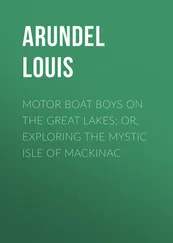James Curwood - The Great Lakes.The Vessels That Plough Them
Здесь есть возможность читать онлайн «James Curwood - The Great Lakes.The Vessels That Plough Them» — ознакомительный отрывок электронной книги совершенно бесплатно, а после прочтения отрывка купить полную версию. В некоторых случаях можно слушать аудио, скачать через торрент в формате fb2 и присутствует краткое содержание. Жанр: foreign_language, foreign_prose, на английском языке. Описание произведения, (предисловие) а так же отзывы посетителей доступны на портале библиотеки ЛибКат.
- Название:The Great Lakes.The Vessels That Plough Them
- Автор:
- Жанр:
- Год:неизвестен
- ISBN:нет данных
- Рейтинг книги:4 / 5. Голосов: 1
-
Избранное:Добавить в избранное
- Отзывы:
-
Ваша оценка:
- 80
- 1
- 2
- 3
- 4
- 5
The Great Lakes.The Vessels That Plough Them: краткое содержание, описание и аннотация
Предлагаем к чтению аннотацию, описание, краткое содержание или предисловие (зависит от того, что написал сам автор книги «The Great Lakes.The Vessels That Plough Them»). Если вы не нашли необходимую информацию о книге — напишите в комментариях, мы постараемся отыскать её.
The Great Lakes.The Vessels That Plough Them — читать онлайн ознакомительный отрывок
Ниже представлен текст книги, разбитый по страницам. Система сохранения места последней прочитанной страницы, позволяет с удобством читать онлайн бесплатно книгу «The Great Lakes.The Vessels That Plough Them», без необходимости каждый раз заново искать на чём Вы остановились. Поставьте закладку, и сможете в любой момент перейти на страницу, на которой закончили чтение.
Интервал:
Закладка:
It will be a great “coming together” for the iron and steel industry, this winning of William Penn Snyder. To-day he is the king of pig iron. When he refused to deal with those who formed the United States Steel Corporation, his friends said that he was ruined. But he stood on his feet alone – and fought. He got a neck hold on the corporation. He cornered pig iron and because of him at the present time the corporation is paying very heavy prices for its outside product. Snyder is worth fifteen million dollars. In 1906, he cleaned up one million five hundred thousand dollars on pig iron alone, and there is no reason for doubting that his 1907 earnings were greater still. He is a powerful enemy to have as a friend – and the corporation wants him, and will probably get him.
If you are going into the North to study the ore traffic at close range, the first man you will probably hear of after leaving your ship is Thomas F. Cole, of Duluth. You must know Cole before you go deeper into the subject of the forty or fifty million tons of ore which the ships will carry during the present year of 1909. The United States Steel Corporation will use about thirty million tons of the total output of the ore regions this year, and Cole is the United States Steel Corporation in this big Northland. He is the head of the finest and most delicate industrial mechanism in the world. This mechanism, in a way, is so fine that it may be said to be almost non-existent. It is simply an “organized and capitalized intelligence.” The Steel Corporation will mine some eighteen or twenty million tons of ore in Minnesota alone this year. Yet it owns not a dollar’s worth of property in the State. As a corporation it does no business in the State. It might be described as a huge octopus, and each arm of this octopus, representing a big mining interest, works independently of all other arms and of the body of the octopus itself. Through these arms the corporation accomplishes its aims. Each huge mine has its own executive organisation, is responsible for its own acts – but it must obtain results. The “central intelligence,” or body of the corporation, is there to judge results, and Cole is the power that watches over all. Officially he is known as the president of the Oliver Mining Company, the greatest organisation of its kind in existence, which attends not only to the Steel Corporation’s interests in Minnesota, but in Michigan and Wisconsin as well. As the great eye of the world’s largest trust he guards the interests of thirty-one mines, employs fifteen thousand men, and gives subsistence to sixty thousand people.
Because of the transportation of this mighty product Cole is as closely associated with the Lakes and their ships as with the ranges and their mines. It has been said that he was “born between ships and mines,” and he has always remained between them. He is one of the most remarkable characters of the Inland Seas. Cole is only forty-seven years old, and for thirty-nine years he has earned his own livelihood, and more. When six years old, his father was killed in an accident in the Phœnix Mine. Baby Tom was the oldest of the widowed mother’s little brood, and he rose to the occasion. At the age of eight he became a washboy in the Cliff stamp mill. He had hardly mastered his alphabet; he could barely read the simplest lines; never in this civilised world did a youngster begin life’s battle with greater odds against him. But even in these days the great ambition was born in him, as it was born in Abraham Lincoln; and like Lincoln, in his little wilderness home of poverty and sorrow, he began educating himself. It took years. But he succeeded.
This is the man whose name you will hear first when you enter the mining country. To chronicle his rise from a dusty Calumet office of long ago to his present kingdom of iron would be to write a book of romance. And there are others of the iron barons of the North whose histories would be almost as interesting, even though fortune may have smiled on them less kindly.
From the immensity of the interests which Cole superintends one might be led to believe that the iron ore industry is almost entirely in the hands of the trust. This, however, is not so. For every ship that goes down into the South for the trust another leaves for an independent. Nearly every maker of steel owns a mine or two in the ranges of Minnesota, Michigan, or Wisconsin. There are five of these ranges. The Mesaba and Vermilion ranges, both in Minnesota, produce about two thirds of the total product carried by the ships of the Lakes; the Goebic, Menominee, and Marquette ranges are in Michigan and Wisconsin.
Somehow it is true that nearly every great thing associated with the Lakes is unusual in some way – unusual to an astonishing degree, and the iron ore industry is not an exception. Probably not one person in ten thousand knows that one lone county in this great continent is the very backbone of the steel industry in the United States. This county is in Minnesota. It is the county of St. Louis, and is about as big as the State of Massachusetts. Not much more than twenty years ago it was a howling wilderness. Even a dozen years ago the Mesaba bore but little evidence of the presence of man. Now this country is alive with industry. Buried in the wilderness which still exists are thriving towns; where a short time ago deer and bear wandered unmolested, is now the din of innumerable locomotives, the rumbling of thousands of trains, the screeching of whistles, and the constant groaning of steam shovels. There is not a richer county on the face of the earth. In it are over one hundred mines, from which one hundred and twenty-three million tons of ore have been taken since Charlemagne Tower, now Ambassador to Germany, brought down the first carload to Duluth in 1884. These mines afford livelihood for more than two hundred thousand people, and because of them St. Louis County possesses the greatest freight traffic road in existence – the Duluth, Mesaba, and Northern Railway – which, in 1907, carried about fourteen million tons of ore from the mines to the docks.
This comparatively little corner of Minnesota practically runs the whole State in so far as expenses are concerned. To administer the affairs of the State, including all of its activities, costs about two million six hundred thousand dollars, and, as inconceivable as it may seem, the three railroads in the ore region pay in taxes one fifth of this sum. They pay one third of the total railroad tax of the State, notwithstanding the fact that some of the greatest lines in the country centre at Minneapolis and St. Paul. To this must be added about seven hundred thousand dollars paid in direct taxes by the mines themselves, so that the iron ore which the ships of the Lakes bring down to Eastern ports each season pays almost half of the total expense of running the State of Minnesota!
And these mines will add more and more to the State exchequer each year, as will also the mines of the three ranges in Michigan and Wisconsin. For in no part of the world has mining been undertaken on a scale so gigantic as that of the Superior region, and every contrivance known to mining science is being used to increase month by month the mountains of ore which ever fail to satisfy the hungry furnaces of the East. It is predicted by Captain Joseph Sellwood, of Duluth, one of the oldest and greatest of the iron barons, that the time is not distant when the Mesaba range alone will be producing forty million tons of ore a year – as much as all five ranges are producing now.
“It will cost over a billion dollars to get this ore to the docks,” said he. “And seven hundred and fifty million dollars more to land it in Lake Erie ports.” – Nearly a two-billion-dollar mining and transportation business for the people of the Lakes to look forward to, and this from a single range!
Читать дальшеИнтервал:
Закладка:
Похожие книги на «The Great Lakes.The Vessels That Plough Them»
Представляем Вашему вниманию похожие книги на «The Great Lakes.The Vessels That Plough Them» списком для выбора. Мы отобрали схожую по названию и смыслу литературу в надежде предоставить читателям больше вариантов отыскать новые, интересные, ещё непрочитанные произведения.
Обсуждение, отзывы о книге «The Great Lakes.The Vessels That Plough Them» и просто собственные мнения читателей. Оставьте ваши комментарии, напишите, что Вы думаете о произведении, его смысле или главных героях. Укажите что конкретно понравилось, а что нет, и почему Вы так считаете.












